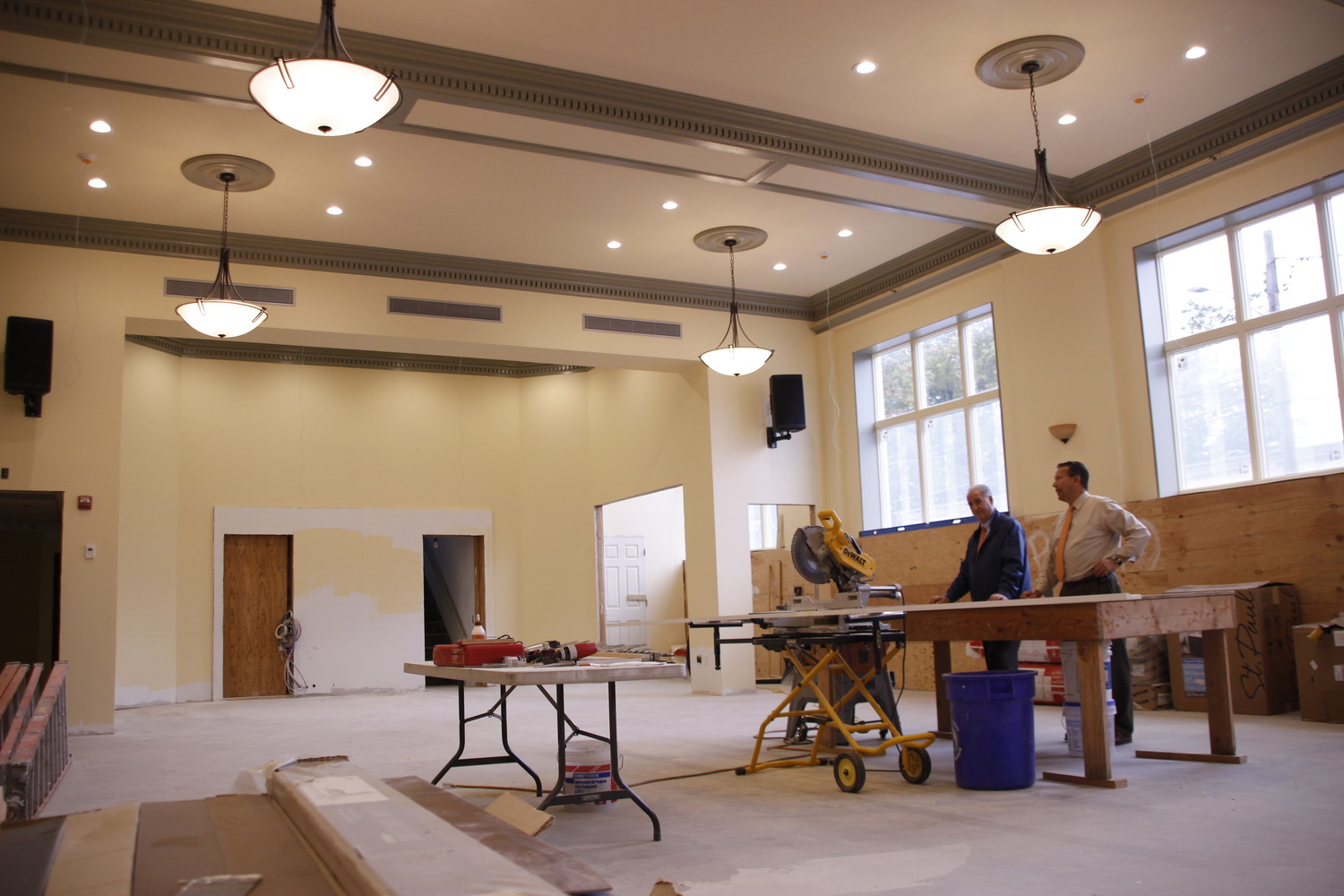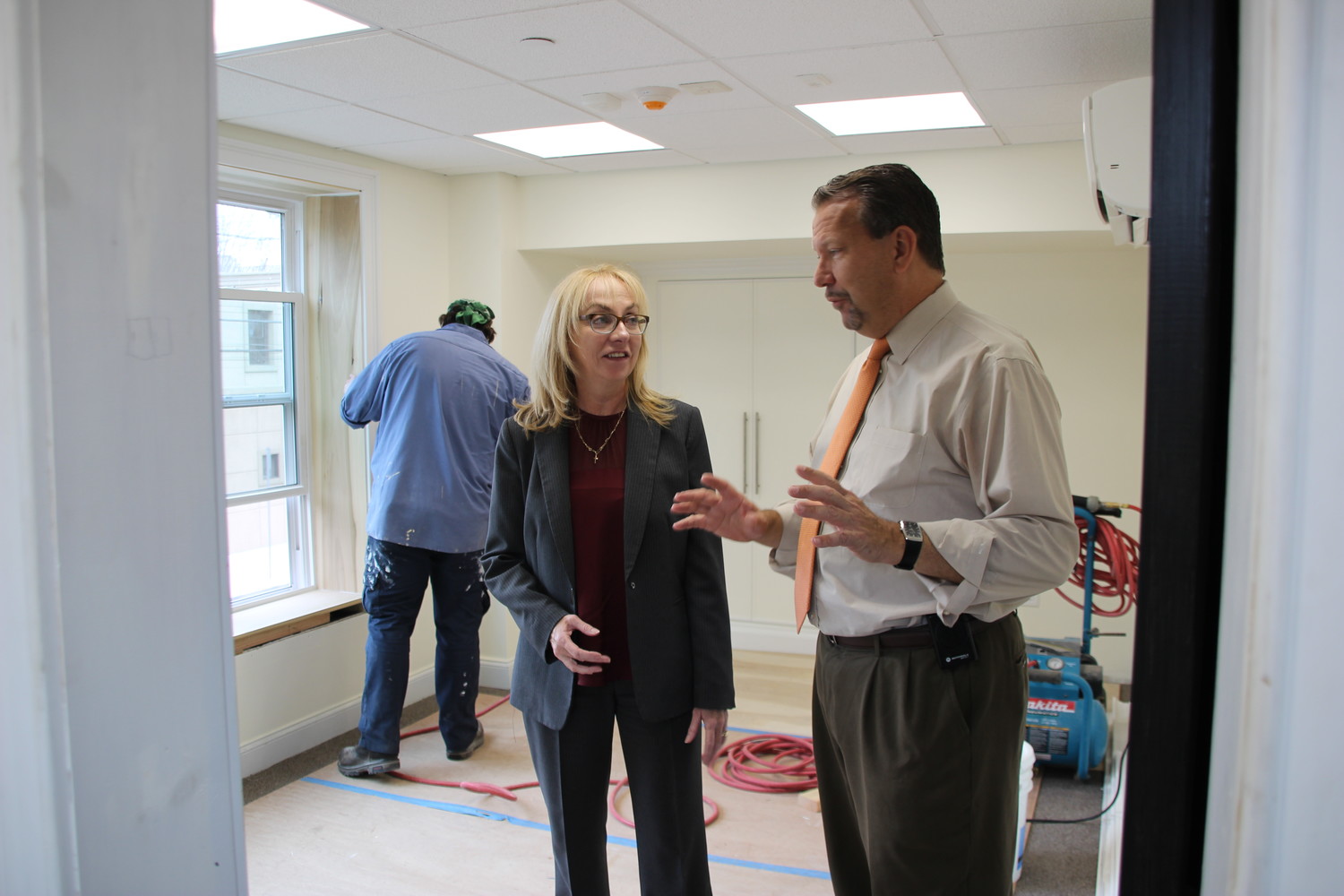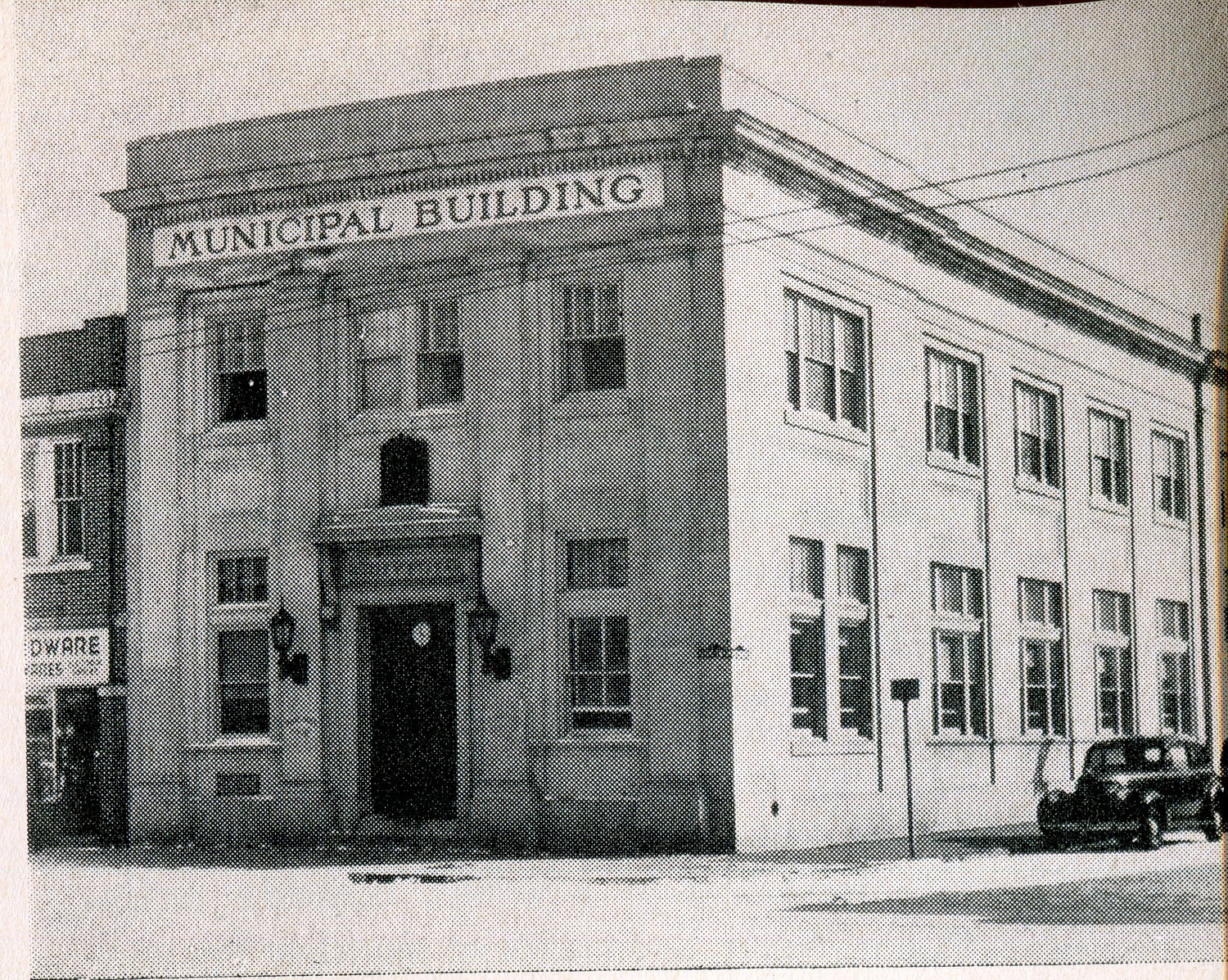Valley Stream courthouse closer to completion
Mayor: March 2018 opening likely

The constantly changing completion date for a new village courthouse has irked residents over the years, but Mayor Ed Fare insists now that the courthouse is nearly finished. The anticipated opening date has been delayed by a year, each year, for about the last four.
“It’s been used ’round the clock from the day I took ownership,” Fare said. Code Enforcement and Auxiliary Police occupy the finished office space on the second level. “If it was dormant and empty, and we weren’t utilizing it and it was like the clock was ticking on an empty shell of a building here, the pressure would’ve been much greater.”
The village bought the property, which was in foreclosure, in 2011 for $880,000 through eminent domain. Fare and Village Clerk Bob Fumagalli estimated that by January, the village will have poured about $3 million into the renovations. They were hopeful that, when finished, it would appraise for double that amount, at $6 million or $7 million.
The Herald recently toured the building, which Fumagalli estimated would be completed by January and operational sometime in March.
The renovations are numerous. The structure, built in 1926 as the first Village Hall, had been occupied by various businesses ever since the late ’50s when the current Village Hall was built. All traces of lead and asbestos were removed. The installation list includes new plumbing, heating, air conditioning, lighting, sprinkler systems, backup generators and an Americans with Disabilities Act-compliant wheelchair lift, among other amenities. The bulk of remaining work is on the lower level, on the 105-seat courtroom and private rooms for attorneys and their clients.
The 1920s-style windows and interior are largely historically accurate, according to Fare, a self-proclaimed history buff. The village, he said, would likely erect a historical marker once the project is completed.
Village Justice Virginia Clavin-Higgins and Associate Justice Melanie Jenkins, along with fewer than a dozen court employees, will move into the upstairs office space, shifting operations from a smaller office they have now at Village Hall.
“This is going to help them be more organized, and the more organized you are, the better you serve the public,” Clavin-Higgins said. “Seriously. There’s no question about it, you’re just more efficient. You don’t have to go to seven different places to get information.”
The upper level is divided among the judges’ chambers, their employees and Code Enforcement and Auxiliary Police — departments that Clavin-Higgins said would operate most efficiently if housed close together. Additionally, there is office and conference room space that she said can be used as needs arise.
Fare said the renovations would have cost “double the money” had the village not opted to finance the project through its capital budget and use village workers.
“We didn’t bond out millions of dollars and bring in outside contractors,” he said. “I want to respect my union workers and my village workforce that actually can just come in here and work. They’re craftsman. These guys did a beautiful job.”
A village campus: Planning for the future
Clavin-Higgins noted that she would like to be more involved with the Boy Scouts and the Valley Stream schools and that the courthouse might make that goal simpler.
“Judge [Robert] Bogle used to do a great job with the scouts, inviting them to come participate in it,” she said. “But sometimes that’s really hard on a Wednesday night at 7 o’clock.”
When the new courthouse is operational, the plan is to hold court more frequently — to both accommodate the large calendar with a reduction in seating (the current courtroom holds 292 people), and bring foot traffic to the business district. Clavin-Higgins said she hoped that the flexibility in schedule and space would allow for more scout activities and partnerships with moot court clubs in the schools.
Clavin-Higgins said that village summonses would indicate available parking lots for residents, which would be empty after the rush hour.
Fare said that the historical significance of the building, coupled with the decision to swap out the existing courtroom at Village Hall with a multicultural theater, would help contribute to the board of trustees’ vision for creating a “village campus” emanating from the Village Green.
“Court nights will probably be every Wednesday night,” Fare said, “A couple hundred people here. Hello? You don’t think Ancona’s and Mitchell’s — it’s not going to help them?”
Correction: An earlier version of this story incorrectly stated that the courthouse has been delayed for about five years. It has been delayed for about four. Initial projections were for a mid-2014 opening.









